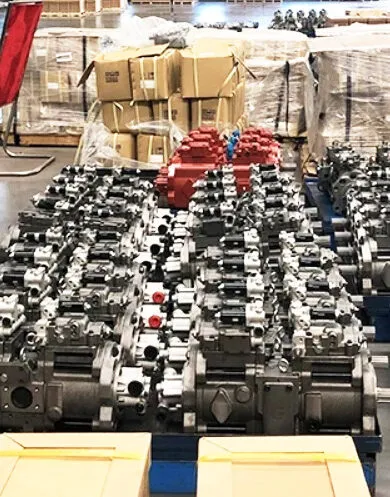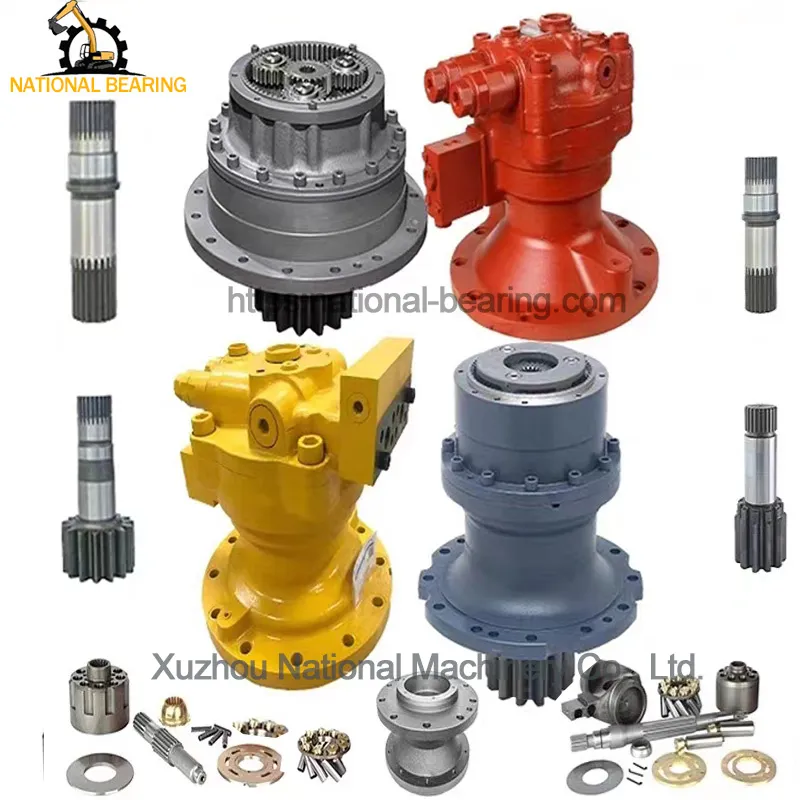
In the realm of machinery and industrial equipment, hydraulic systems play a crucial role in powering various mechanisms and enabling precise control over movement and force. Central to the functionality of hydraulic systems are hydraulic parts, which encompass a diverse range of components designed to facilitate the transmission and control of hydraulic fluid. In this comprehensive guide, we will delve into the world of hydraulic parts, exploring their functions, types, and applications.
Before delving into the specifics of hydraulic parts, it is essential to understand the fundamental principles of hydraulic systems. At their core, hydraulic systems operate on the principle of Pascal’s Law, which states that pressure exerted at any point in a confined fluid is transmitted equally in all directions. This principle forms the basis for the transmission of force and motion within hydraulic systems.
Hydraulic systems typically consist of four primary components:
Hydraulic fluid serves as the medium for transmitting power within hydraulic systems. It must possess certain properties, such as high viscosity, low compressibility, and resistance to oxidation and thermal degradation, to ensure optimal performance.
The hydraulic pump plays a pivotal role in the operation of hydraulic systems, serving as the heart that circulates hydraulic fluid throughout the system. This essential component is tasked with converting mechanical energy into hydraulic energy, thereby generating the necessary pressure to facilitate the movement of hydraulic fluid. Operating in a closed-loop system, the hydraulic pump ensures a continuous flow of fluid to power a myriad of hydraulic actuators, including cylinders, motors, and valves, enabling them to perform their designated functions with precision and efficiency.
Whether it’s lifting heavy loads, operating machinery, or controlling the movement of hydraulic arms and booms, the hydraulic pump serves as the driving force behind the functionality of hydraulic systems across various industries, from construction and manufacturing to agriculture and automotive sectors. With its ability to generate high pressures and deliver consistent fluid flow, the hydraulic pump is indispensable in powering the hydraulic machinery and equipment that form the backbone of modern industrial operations.
Hydraulic actuators are devices that convert hydraulic energy into mechanical motion or force. They include hydraulic cylinders, hydraulic motors, and hydraulic valves, which are essential for performing work in hydraulic systems.
Control valves regulate the flow and pressure of hydraulic fluid within the system, enabling precise control over movement and force. They direct the flow of fluid to different actuators and adjust the system’s operating parameters to meet specific requirements.
Hydraulic hoses are flexible conduits that carry hydraulic fluid between components within the hydraulic system. They are typically constructed of synthetic rubber or thermoplastic materials reinforced with layers of braided or spiral-wound wire for strength and durability.
Hydraulic fittings are connectors used to join hydraulic hoses, tubes, and components together in hydraulic systems. They come in various shapes, sizes, and configurations to accommodate different hose types and system requirements.
Hydraulic seals are essential components that prevent hydraulic fluid from leaking and maintain pressure within hydraulic systems. They are used to seal the gaps between moving parts, such as pistons, cylinders, and valves, ensuring proper functioning and efficiency of the system.
Hydraulic filters are critical components that remove contaminants, such as dirt, debris, and particles, from hydraulic fluid to maintain system cleanliness and prevent component damage. They are typically located in the hydraulic reservoir or within the hydraulic circuit.
Proper maintenance of hydraulic parts is essential for ensuring the reliable performance and longevity of hydraulic systems. Regular inspection, cleaning, and replacement of hydraulic hoses, fittings, seals, and filters are necessary to prevent leaks, malfunctions, and system failures.

Hydraulic parts are integral components of hydraulic systems, playing a critical role in facilitating the transmission and control of hydraulic fluid. From hydraulic hoses and fittings to seals and filters, each component performs a specific function essential for the proper operation of hydraulic systems. By understanding the different types of hydraulic parts and their